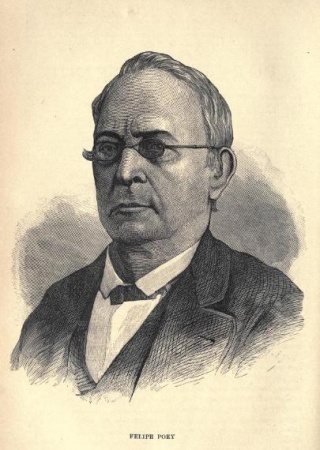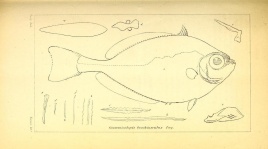Felipe Poey
- … Felipe Poey would visit the fish market in Havana every day to see if there was a new species hidden in the day’s catch?
- … he renounced his French citizenship in order to be a Cuban citizen?
- … he taught Carlos de la Torre y Huerta, who is also featured in this exhibition?
- … the specimens he took to Paris were preserved in brandy, a common practice at the time?
- … the natural history museum at la Universidad de la Habana is named after him?
- … his Ictiología Cubana would remain unpublished until the 21st century?
- 1799 – May 26 - Born in Havana, Cuba
- 1825 – Marries María de Jésus Aguirre
- 1826 – Leaves for Paris to practice law and becomes a part of the European natural history community
- 1833 – Returns to Havana
- 1842 – Becomes professor of Comparative Anatomy & Zoology at the Royal University of Havana, a position he holds for over 40 years
- 1851 – Begins publishing on the animals of Cuba
- 1868 – Publishes Synopsis Piscium Cubensium
- 1875 – Publishes Enumeratio Piscium Cubensium
- 1891 – January 28 – Dies in Havana
Naturalist Felipe Poey y Aloy is easily one of Cuba’s most prolific naturalists of the nineteenth century, yet he remains quite unknown at the international level. Born in Havana to a French father and Spanish mother, Poey studied law in Cuba and Spain, but he always found himself drawn to the natural world. As he practiced law in Europe, he became part of the European natural history community, and even transported several specimens and drawings from Cuba to Paris. In fact, well-known naturalists Georges Cuvier and Achille Valenciennes based many new species in their Natural History of the Fishes on Poey's drawings and specimens. When he returned to Havana in 1833, Poey engrossed himself fully in the natural history of Cuba. He went on to publish in several languages, became a member of numerous prestigious scientific institutions, and helped establish Havana’s Museum of Natural History. While he studied many forms of wildlife, he was most drawn to the study of fish, dedicating much of his life to writing Ictilogía Cubana, which described and illustrated over 700 species of fish found in Cuba.


